Effective website organization is crucial for enhancing visibility on search engines like Google. Proper structure not only helps users easily navigate through your site but also boosts its ranking in search engine results. A well-organized website serves as the foundation for implementing powerful SEO strategies.
The concept of topical content silos involves segmenting your website’s content into distinct sections that focus on specific themes. This advanced SEO technique aids in the categorization and logical structuring of your content. Each silo targets a particular topic or set of related keywords, thereby enhancing SEO by arranging content in a way that is intuitive for both users and search engines.
Sections dedicated to specific topics on your website signal to search engines your expertise in those areas, thereby establishing your credibility. These thematic sections also facilitate internal linking, which amplifies the significance of key subjects within your site. Let’s delve deeper into how topical silos can elevate your website’s search engine rankings.
Understanding Topical Content Silos
Definition and Basics of Topical Silos
Topical silos are a strategic approach to organizing website content for superior search engine optimization. This entails segregating the content on your site into interconnected sections that are thematically related. Each silo revolves around a unique topic or a cluster of related keywords and is composed of a network of interlinked pages.
These content silos simplify content discovery for both search engines and users by grouping related information logically and connecting related topics. Within a specific category, there typically exists a pillar page, which provides an in-depth exploration of the main subject. The auxiliary pages then examine subtopics related to this central theme, thereby offering a cohesive and comprehensive informational resource.
The Rationale Behind Using Silos for SEO Benefits
In SEO, topical content silos serve to categorize and enhance content relevance. Search engines favor well-organized websites that align with user intent. Silos streamline content in a manner that aids search engine crawlers in comprehending the essence and structure of the content. Moreover, they improve user engagement by reducing bounce rates and increasing interaction levels.
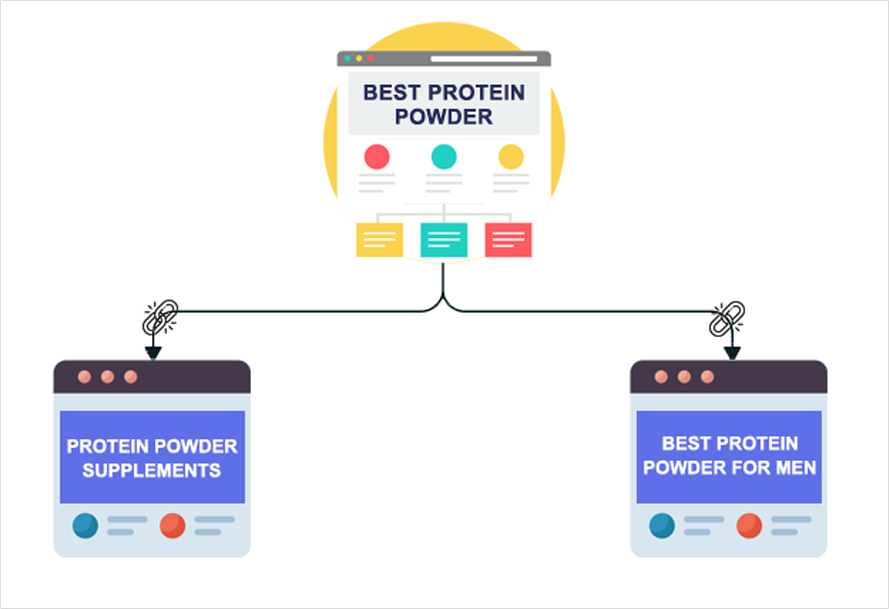
By producing an abundance of content on related topics, websites can demonstrate expertise in specific domains. This potentially leads to improved search engine rankings, increasing the site’s visibility and driving organic traffic—making the use of topical silos an invaluable strategy for content-rich websites.
SEO experts play a pivotal role in assisting clients with the strategic organization of content silos, ultimately leading to significant improvements in search engine rankings.
Benefits of Organizing Content Into Topical Silos
Improved Website Crawlability for Search Engines
Optimizing websites for easier navigation by search engine bots is a pivotal aspect of SEO. This involves making it simple for crawlers to discover and index the content on your website. A well-structured site, complete with intuitive links and site maps, enables search engines to more effectively locate and index key pages.

Ensuring that your site’s information is accurately represented in search engine listings can boost its position in search results. Higher visibility means more organic traffic, amplifying the reach of your website.
Enhanced User Experience Leading to Longer Dwell Time
Prioritizing usability is crucial for enhancing the user experience. When visitors find it effortless to navigate and interact with your website—thanks to clear menus, intuitive layouts, and fast-loading pages—they are more likely to stay longer. Increased dwell time sends a positive signal to search engines.
Extended time spent on a website indicates that it offers valuable information and satisfies user needs. Search engines often interpret this as a sign of a website’s usefulness and relevance, which can positively impact its ranking in search results. Therefore, investing in user experience can directly influence your website’s performance in search engine rankings.
Clearer Site Structure Leading to Potential Rank Boost
Having a well-organized website is pivotal for effective SEO. When your site has a coherent structure, it aids search engines in understanding the interrelations between pages and the overall focus of the website. This clarity not only enhances user navigation but also helps search engines index your content effectively.
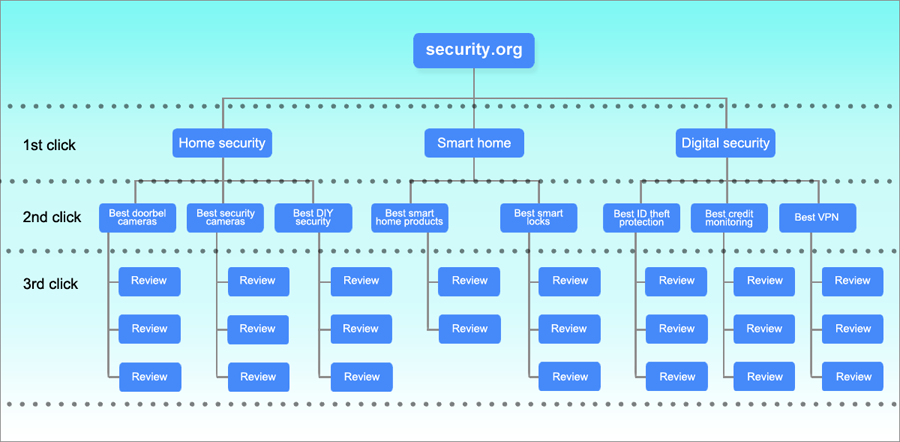
As a consequence, search engines are more likely to rank your website higher in search results, recognizing its relevance and importance. In simpler terms, a neatly structured website can positively impact your search engine rankings, propelling your web pages to coveted positions in search results.
Strengthening Domain Authority in Specific Niches/Topics
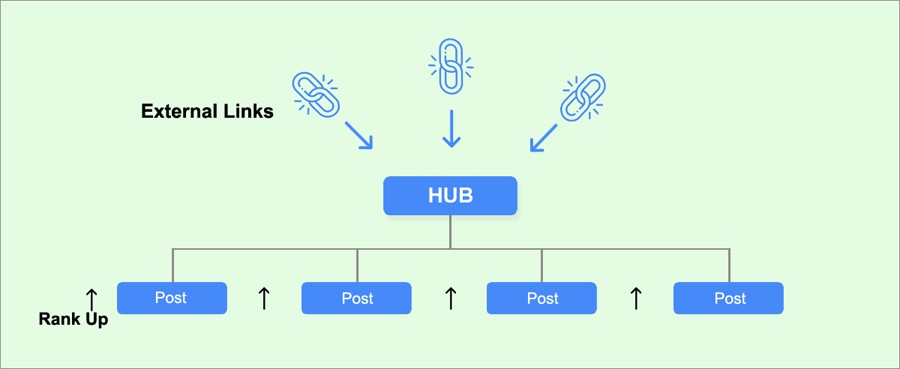
Specializing in certain subjects and meticulously organizing your content can bolster your website’s authority in those specific niches or topics. When you consistently produce valuable content centered on a particular theme, search engines view your site as a credible resource in that domain. This can lead to improved rankings and greater visibility for relevant search queries.
By logically structuring your website’s content and consistently delivering useful information, you make your site a go-to resource for individuals seeking expertise in that particular topic. This not only enhances your SEO performance but also positions your brand as a knowledgeable and reliable authority in your specialized field.
Also Read: Domain Authority 301 Rebranding
Steps to Create Effective Topical Content Silos
Identify Core Topics
How to Spot Primary Categories or Topics Relevant to Your Business?
Identifying the core topics that relate to your business is crucial for content creation and enhancing your website’s visibility on search engines. Here’s a step-by-step guide to help you zero in on these vital segments:
Understanding Your Business: Start by analyzing the primary products, services, and objectives of your organization. Identify the foundational elements that constitute your business. For instance, if you operate an online store, your core categories might include electronics, apparel, and home decor.
Audience Research: Thoroughly understand your target audience by crafting personas that represent your ideal customers. Assess their interests, challenges, and questions to align your content with their needs effectively.
Competitor Analysis: Study the content and SEO strategies employed by your competitors. Identify the topics they excel at covering, as this could offer insights into what’s valuable in your industry. Explore opportunities to approach these subjects uniquely or delve into niche areas they’ve overlooked.
Keyword Research: Use keyword research tools to discover search terms pertinent to your business. Focus on high-volume keywords that face moderate competition. Such terms often signify popular categories or subjects in high demand.
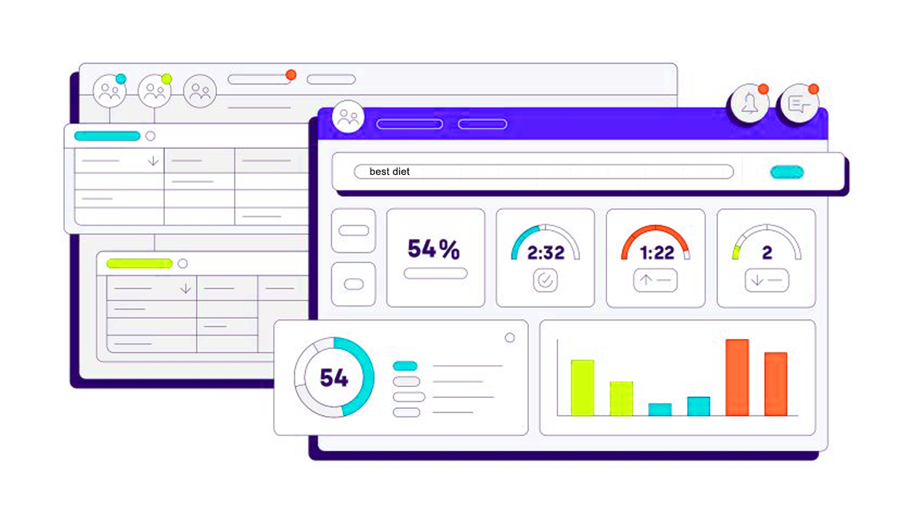
Content Gaps: Review your existing content to identify areas that are either underrepresented or entirely lacking. These gaps indicate important topics that should be addressed to fulfill your audience’s information needs comprehensively.
Tools and Techniques to Research Potential Core Topics
To effectively identify potential core topics for your website, various tools and techniques can come in handy.
Keyword Research Tools: Utilize platforms like Google Keyword Planner, SEMrush, and Ahrefs to gain insights into keyword popularity, competition levels, and related terms. This data can guide you in selecting core topics that are both relevant and potentially profitable.
Content Ideation Tools: Leverage platforms like BuzzSumo to discover content that resonates with audiences within specific subject areas. Analyzing top-performing articles can spark inspiration for your own core topics.
Google Trends: This tool provides valuable insights into what people are actively searching for on Google. By identifying trending queries and topics, you can stay abreast of emerging interests and adjust your content strategy accordingly.
Pay Attention to Social Media: Keep tabs on social media channels and online forums that focus on your industry. Stay attuned to discussions, emerging trends, and topics garnering attention, as these can offer clues to what your target audience finds relevant.
Analyze Your Competitors: Regularly assess your competitors’ content and SEO strategies. Identify gaps in their coverage and seek opportunities to outperform them. Look for overlooked topics that you can capitalize on to gain a competitive edge.
By incorporating these five methodologies, you can construct a comprehensive strategy for pinpointing the most pertinent categories and topics that align with both your business goals and the interests of your target audience.
Also Read: Top 14 Competitor Website Analysis Tools
Break Down Core Topics Into Subtopics
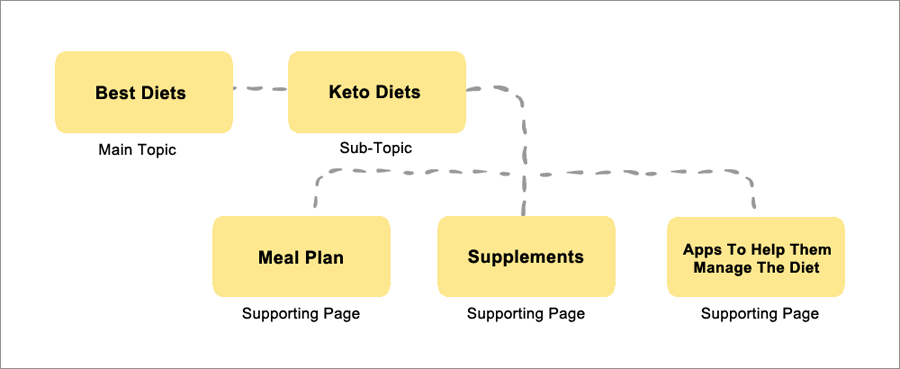
The Importance of Having Relevant, Interconnected Subtopics
Having relevant, interconnected subtopics is crucial to the efficacy of your content strategy. These subtopics enrich your primary topics by providing additional insights, background, and depth, thereby offering a more comprehensive resource.
By meticulously linking related subtopics, you not only cater to diverse audience needs but also signal to search engines that your site is a reliable authority in that particular field. Cohesive subtopics contribute to a unified information structure, facilitating seamless user navigation and enhancing user experience.
This well-organized content encourages visitors to delve deeper into related topics on your site, thereby increasing user engagement. The longer users stay on your website, the more likely they are to find the information they seek, leading to higher user satisfaction.
Search engines prioritize websites with coherent and in-depth coverage of specific topics when determining search rankings. A website rich in focused content is more likely to rank higher in search engine results, thereby attracting more visitors and cementing your brand’s reputation as a trustworthy source in your area of expertise.
How to Choose Which Sub-Topics to Tackle First Based on Search Volume and Competition?
Selecting which subtopics to tackle first requires a strategic approach that takes into account both the search volume and the level of competition for those topics.
Keyword Research: Begin by conducting keyword research to identify potential subtopics that relate to your primary topic. Aim to target keywords that have a significant search volume but face manageable competition.
Focus on High Search Volume: Prioritize subtopics that exhibit a high search volume, as this indicates strong user interest. Producing content around these topics is more likely to attract a greater number of visitors to your website.
Competitive Analysis: Assess the competitive landscape by evaluating businesses or individuals who are currently ranking for those subtopics. Consider the quality of their content and their domain authority. Opt for subtopics where you have a reasonable chance of ranking, especially if your site has lower authority.
Long-Tail Keywords: Consider incorporating long-tail keywords that relate to your chosen subtopics. These more detailed keywords generally face less competition and can attract a niche audience to your site.
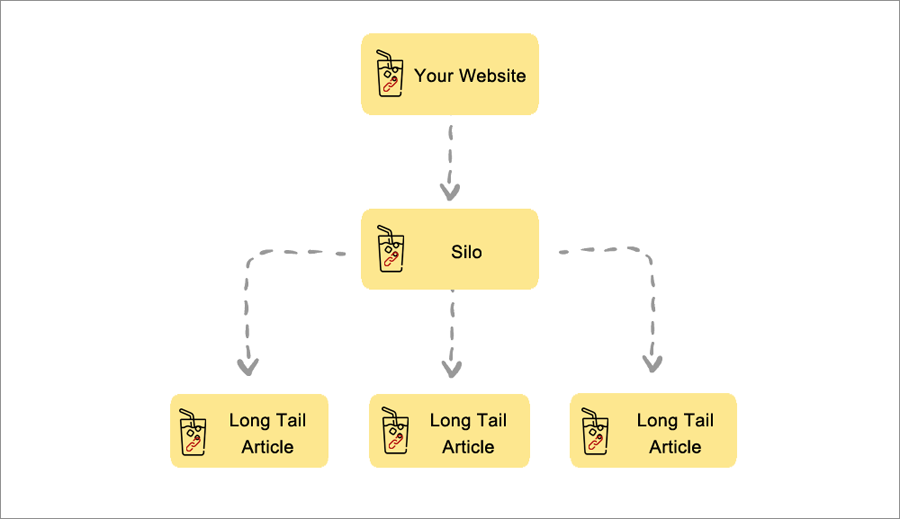
Content Synergy: Opt for subtopics that align well with your current content. This makes it easier to create internal links and develop a more comprehensive understanding of the subject matter.
By weighing both the search volume and competitive landscape, you can strategically decide which subtopics to focus on first. This not only enhances your SEO strategy but also better engages your user base.
Design a Logical Website Hierarchy
Tips on Creating a User-Friendly and SEO-Optimized Site Structure
Clear Hierarchy: Establish a well-defined hierarchy on your website to facilitate easy navigation for users. Start by presenting primary categories, followed by more specific subcategories. This organized layout should clearly represent both overarching themes and more nuanced topics on your site.
Easy to Use Navigation: Prioritize an intuitive and user-friendly navigation menu. When designing the menu, use straightforward and descriptive labels for each section. Avoid ambiguous or vague terminology that may confuse visitors. A simple, well-organized menu helps users find what they’re looking for with ease.
Organized URL Structure: Ensure your website’s URLs are consistently structured and easily understandable. The web addresses should offer a clear indication of the content visitors can expect upon clicking. Avoid long, complicated URLs with extraneous characters or unnecessary information, as they can hinder both user experience and search engine comprehension.
Mobile Responsiveness: Given the increasing use of mobile devices for web browsing, it’s crucial that your website is mobile-responsive. Ensure your site adapts well to various screen sizes to provide a seamless user experience while also benefiting your search engine optimization efforts.
XML Sitemaps: Increase your website’s visibility in search results by generating XML sitemaps and submitting them to search engines. These sitemaps assist search engine crawlers in understanding your site’s structure and categorizing your pages more effectively, thereby improving your website’s discoverability.
Importance of Breadcrumbs and Internal Linking for Reinforcing Silos
Enhanced Navigation: Breadcrumbs serve as navigational aids, helping users understand their location within your website. They simplify the process of backtracking or moving to other related pages within the same section.
SEO Optimization: Internal linking enhances your website’s SEO performance. When you connect pages related to a common topic, it signals to search engines that your site has depth and expertise in that specific area, potentially boosting your page rankings
User Exploration: Internal linking encourages users to explore more related content on your site. This not only prolongs their stay but also reduces bounce rates, metrics that are favorable to search engines.
Keyword Optimization: Utilizing clear and specific anchor text for internal links helps search engines more accurately index your content. This practice increases the chances of your site ranking highly for relevant keywords.
Silo Integrity: Strategically internal linking related content within individual content silos helps preserve the coherence and focus of these topical clusters. This ensures your main topics remain robust and prevents the dilution of your central themes.
Incorporating breadcrumbs and well-planned internal linking not only improves user navigation but also fortifies your content structure. This dual advantage optimizes both user engagement and search engine visibility.
Optimize Each Silo Landing Page
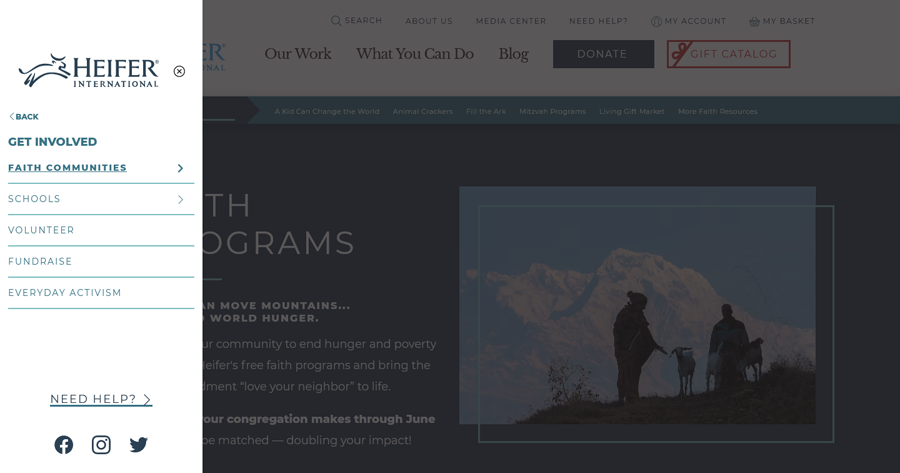
Crafting the Perfect Landing Page for Each Core Topic
Creating a high-impact landing page for each of your main topics is essential for both content marketing and SEO. Here’s how to achieve this:
Thematic Relevance: Ensure that each landing page aligns closely with its corresponding main topic. The content should address what the audience is keen to know, making it both engaging and relevant.
Catchy Titles: Craft eye-catching yet concise titles that encapsulate the essence of your content. A compelling headline not only grabs attention but also sets clear expectations for the reader.
Quality Content: The cornerstone of any effective landing page is top-notch content. Aim to provide valuable insights, answer common questions, and offer solutions to your audience’s challenges. Employ a mix of text, images, and videos to captivate your users.
Clear Call-to-Action (CTA): Every landing page should feature a well-defined CTA that guides visitors on what to do next. Whether it’s subscribing to a newsletter, making a purchase, or downloading a resource, your CTA should be unambiguous and strategically placed.
User-Friendly Design: Prioritize a seamless user experience on your landing pages. This entails fast load times, mobile responsiveness, and intuitive navigation. A positive user experience is crucial for keeping visitors engaged and encouraging them to explore your website further.
Importance of Keyword Optimization, Multimedia, and Authoritative Content
Keyword Optimization: This involves strategically incorporating relevant keywords into your content and other webpage elements to enhance its performance in search engine rankings. Proper keyword optimization helps search engines comprehend the focus of your landing page, increasing its visibility and driving more organic traffic.
Multimedia Elements: Integrating visual aids like images, videos, and graphs, as well as interactive elements, enriches the user experience. These components not only break up the text but also cater to diverse learning styles, encouraging visitors to spend more time on your page and reducing bounce rates.
Authoritative Content: This refers to producing content that is both authoritative and reliable. Doing so establishes your expertise in the field, engenders trust among your audience, and increases the likelihood of earning backlinks from reputable sources. High-quality, well-researched content has a better chance of ranking at the top of search engine results and resonating with your target audience.
Incorporating these strategies into your landing pages can significantly improve user engagement, time spent on the page, and your website’s search engine ranking. Ultimately, this contributes to a stronger online presence and increases the likelihood of conversions.
Also Read: Best Practices for Anchor Text Optimization
Internal linking Within the Silo
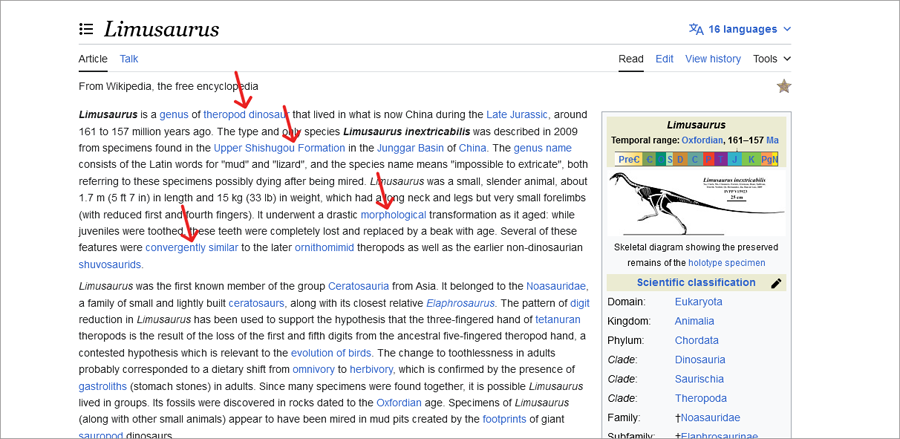
Importance of Keeping Interlinking Confined to the Same Silo for Maximum SEO Benefits
Maintains Topic Relevance: Internal linking pages within the same silo ensures that the content remains topically relevant and interconnected. This reinforces your website’s authority on that particular subject, making it more attractive to search engines.
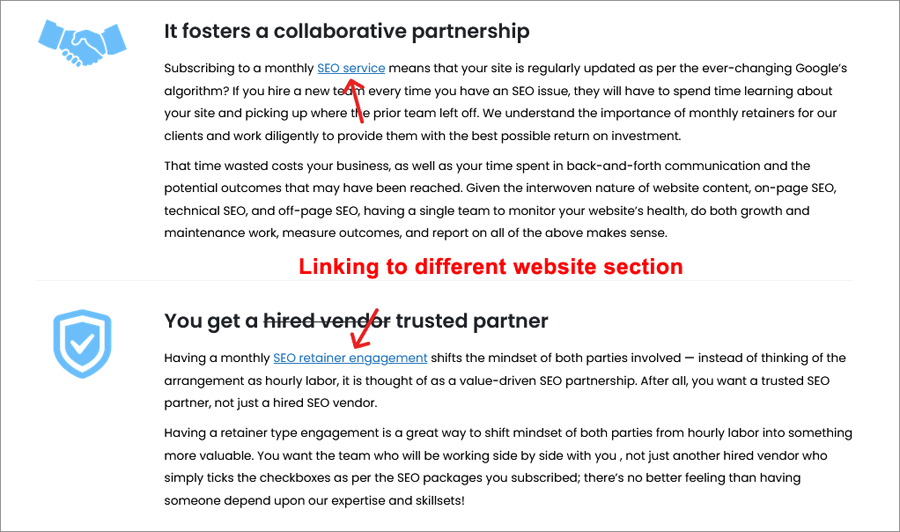
Reduces Keyword Dilution: Limiting internal links to pages within the same silo helps to concentrate the focus on specific keywords. This enhances your SEO performance, increasing the likelihood that your website will rank highly in search results for related queries.
Improves User Experience: Interlinking within the same silo makes it easier for visitors to find related content that aligns with their interests. This improves user satisfaction as they can effortlessly access additional information without straying from their primary focus.
Reduces Confusion: A well-organized interlinking structure minimizes user confusion, making your website easier to navigate. This lowers the risk of visitor frustration and abandonment, keeping users engaged with your content.
Optimizes Crawl Efficiency: Grouping related content into silos simplifies the task for search engine crawlers, enabling them to index your site more effectively. This positively impacts your website’s visibility and SEO performance.
Best Practices for Internal Linking Within a Silo
Use Descriptive Anchor Text: The anchor text for your links should accurately represent the content of the linked page. Descriptive anchor text is crucial as it guides both users and search engines in understanding the context and relevance of the link.
Focus on User Intent: Ensure that the internal links on your site align with what your audience is seeking. Consider what information users might want to explore next within the same topic and provide links that facilitate easy navigation to those pages.
Balance Link Density: Avoid overwhelming users by including too many internal links on a single page. Aim for a balanced number of links that are contextually relevant and genuinely useful to the reader.
Maintain Consistency: Keep your internal linking strategy consistent throughout your website. This will make it easier for both users and search engines to understand your site’s organizational structure. Uniformity in link placement, format, and style is key.
Audit and Update Regularly: Regularly review and update your internal links to ensure their relevance and accuracy. As your content evolves, so should your internal linking strategy, in alignment with user interest and SEO objectives.
By adhering to these best practices for internal linking within the same silo, you can enhance your website’s navigability and organizational structure. This, in turn, improves user experience and boosts your site’s visibility in search engine results, attracting more potential customers.
Common Mistakes to Avoid
Overcomplicating Silo Structure
An overly complex silo structure can impair both user experience and search engine rankings. While content silos are intended to bring order to your content, making them too intricate can lead to confusion for both users and search engines. Excessive categories and convoluted interconnections can hinder users from finding what they’re looking for.
Likewise, search engines may struggle to identify the central theme of each category, which could negatively affect your rankings. To avoid this, keep your organizational structure straightforward, concise, and aligned with both user needs and SEO objectives.
Inconsistent Interlinking Outside the Silo
Linking to unrelated topics can dilute the focus of your content. Poorly chosen external links can confuse both readers and search engines about what your content aims to convey. Moreover, if your links are not well-curated, you risk increasing your website’s bounce rate as users may opt to leave your site. To optimize your site for both users and search engines, ensure that all external links are contextually relevant, originate from credible sources, and offer additional value to your audience.
Not Updating or Revisiting Silo Content Regularly
Failing to periodically update or review the content within your silos can adversely impact your SEO performance. Outdated information may not meet users’ current needs, which can result in lower search rankings. Search engines favor up-to-date, relevant content, so failing to refresh your website can affect its visibility in search results.
To keep your silos effective, allocate time for regular content audits. This involves updating information, refreshing visuals, and ensuring the content remains pertinent and engaging for your audience. Regular maintenance is crucial for maintaining the credibility, relevance, and competitive edge of your content silos in search results.
Neglecting Mobile Experience and Load Times
Overlooking the mobile experience and page load times can alienate a significant portion of your audience. With the increasing use of mobile devices, having a mobile-responsive design is crucial for user satisfaction. Slow-loading pages can frustrate users, potentially leading them to abandon your site.
Search engines also factor in page load speed when determining rankings. If your website isn’t optimized for mobile devices and doesn’t load quickly, it will be less discoverable in search engine results, reducing its appeal to potential visitors. Ensure your website is mobile-friendly, loads swiftly, and offers a seamless navigation experience to improve both user satisfaction and search engine performance.
Conclusion
In the ever-evolving landscape of SEO, topical silos remain a vital strategy for enhancing a website’s structure and its performance in search engine rankings. By organizing your content into clear, related sections, you not only facilitate easier navigation for users but also signal to search engines that your content is focused and authoritative.
Staying competitive in today’s digital world requires constant vigilance. Regularly update or remove outdated or irrelevant content, and ensure your website’s structure aligns with current SEO best practices and user expectations. Through ongoing assessment and refinement, you can optimize the use of topical content silos, improve your website’s search engine standing, and ultimately succeed in the competitive online marketplace.
For those seeking expertise in creating topical silos or any other SEO services, feel free to reach out to PageTraffic. Our experienced team can enhance your website by fine-tuning its structure, organization, and overall SEO strategy, thereby increasing your online visibility and helping you achieve your digital marketing goals.
FAQs
What are topical silos, and why are they significant for SEO?
Topical silos refer to the organization of content on your website into well-defined, related categories. They play a crucial role in SEO by helping search engines better understand the structure and focus of your website. This can lead to higher rankings in search engine results and provide a more user-friendly experience.
How can I determine the best topics for my website’s silos?
To identify the most suitable topics for your silos, consider your business goals, target audience, and commonly searched keywords relevant to your industry. Break down broader topics into more specific subtopics, ensuring they align with what users are searching for and have sufficient search volume.
What is the most effective way to interlink content within a silo?
For effective interlinking within a silo, use clear and descriptive anchor text that helps both users and search engines understand the linked content. Ensure there’s a logical flow between the pages you’re linking and that the links are contextually relevant. Avoid overcrowding the page with links and focus on enhancing the user experience and reinforcing topical authority.
Is it necessary to frequently update my topical silos?
Regular maintenance of topical silos is essential. Keep your content updated and engaging to retain its relevance and value. Stay attuned to shifts in user behavior and emerging SEO trends to adjust your silos accordingly. Periodic audits and updates are crucial for optimizing their performance.
























